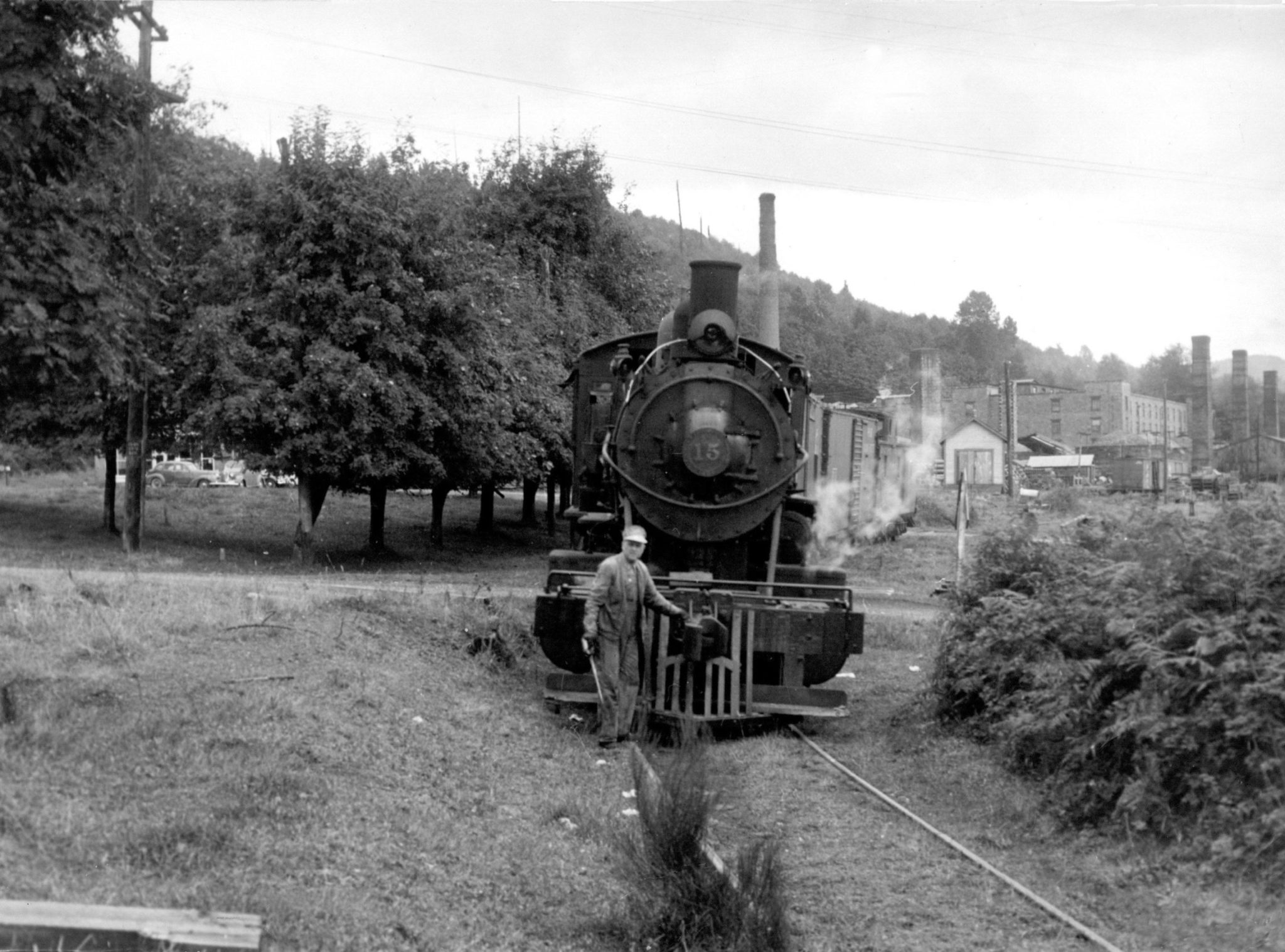By late 1944, Taylor was resigned to its fate – to die and become a Ghost Town. Taylor was founded in 1893 when Arthur Denny capitalized the Denny Clay Company to make bricks and tile as Seattle continued rebuilding from the disastrous fire of 1889. The area around Taylor had four key components required for success: coal, clay, water, and a railroad. Coal powered the furnaces and kilns, which dried wet clay into finished bricks and tile. Water came from Taylor Creek. And, the Columbia & Puget Sound railroad was the cog, which allowed transportation of finished products to the growing city, which Denny help found. Five decades later water would became more important for another reason. Seattle’s municipal water source was the Cedar River and Taylor was in the middle of that watershed.
Taylor’s production had declined over the years as asphalt and concrete began to replace clay products in building and construction. The tile plant was old, with the appearance of a sprawling ruin. The town’s only store was boarded up forcing residents to travel to Maple Valley or Renton for food and supplies. Only 20 or so homes remained for the 50 to 60 residents who still lived there. Many were ramshackle affairs and most stood long unpainted. Even the white Catholic chapel showed a weary face to father time. In 1946, Seattle exercised their power of condemnation and received a judicial order to purchase the town. The following year Gladding-McBean, which had taken over operations in 1927, closed down the plant and sold the land to Seattle Public Utilities for $200,000. One of the last families to leave were the Sandheis, whose son Dale graduated from Tahoma in 1950. This October 1944 photo of an unknown railroad worker, standing in front of Pacific Coast Railroad engine number 15, was taken by Harold A. Hill. It comes courtesy of JoAnne Matsumura, an Issaquah historian, with descriptions of Taylor adapted from a Nov. 22, 1944, Seattle P-I article.







